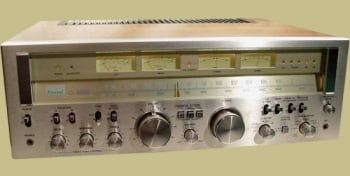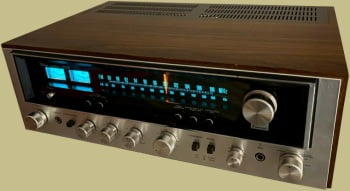
This gem from 1973 is the Sansui 771 receiver. It was at the upper end of Sansui’s xx1 lineup which consisted of the 221, 331, 441, 551, 661, 771, and top of the line 881. MSRP was $430 in 1973 but I’ve seen prices all over the place in different advertisements of the time. Even as low as $289.95 in 1974. Regardless, it is a very good receiver. It’s styling may leave a little to be desired but it’s performance is excellent. It produces 32 watts per channel into 8 ohms. That’s at 20-20,000Hz. At 1000Hz it produces 40 wpc.

I’m not a big fan of the short dial face and prefer one that extends the length of the receiver. That being said, the black dial face background with green illumination and the veneer wood top and sides really give it a nice look. The big push button switches and faceted knobs are nice too.
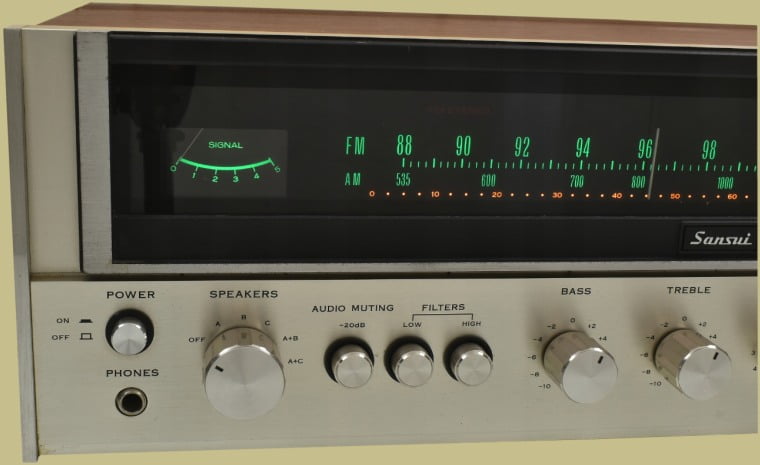
The Sansui 771 has a small signal strength meter, high and low filters, a mute button (-20dB), a speaker control selector, and a headphone input on the left side of the face plate. In the middle are the bass, treble, and volume controls. It’s an interesting place to put the volume control. To the right are controls for loudness, a mono switch, tape monitor, and FM muting. There is also a MIC input. The 771 is not loaded with features but what it does, it does well.
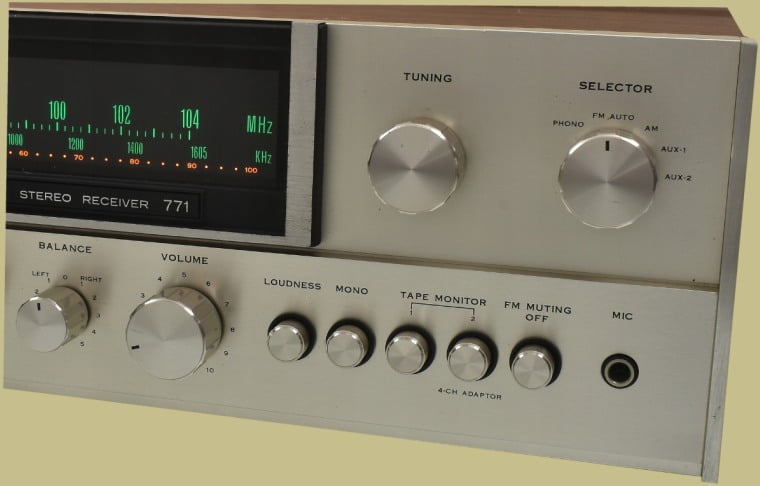
Sansui used what they called “Circuit Board Module” (CBM) construction on the 771 stereo. They claimed that it simplified construction, lowered costs, and increased electronic capabilities. I’m not exactly sure what that means but it sounds good. Actually, they imply that CBM construction allows them to offer a superior receiver at a moderate price.
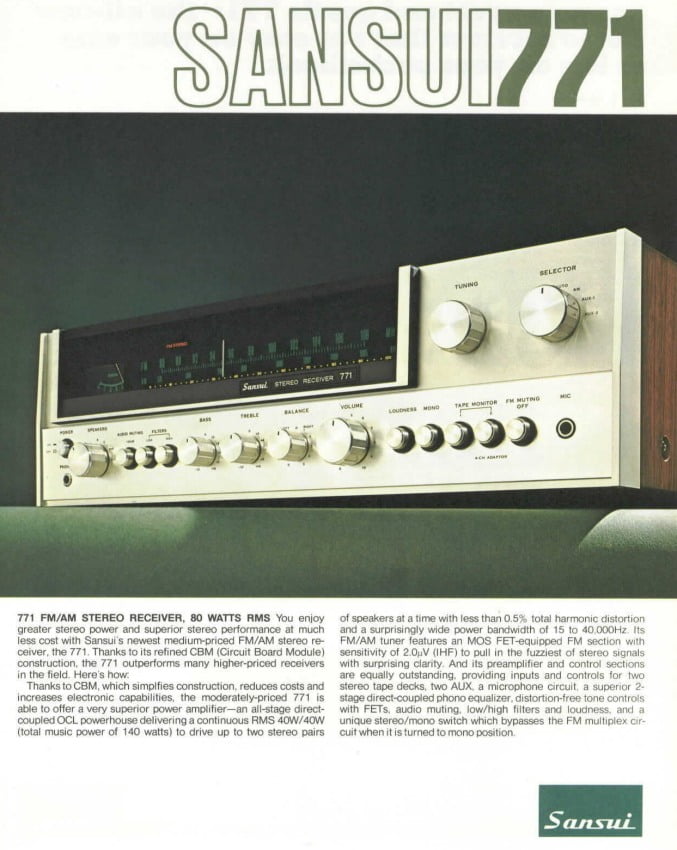
Sansui made an 8010 version of the 771 which featured a black face and was probably available in Europe or Asia. Both the 8010 and the 771 had real glass dial faces.

The FM tuner in the Sansui 771 is a MOS FET design but many users say it’s just an average performing tuner. The power amplifier in the 771 is what shines. It’s an all-stage direct coupled OCL design and creates less than 0.5% total harmonic distortion. It can power 2 sets of speakers at a time and has a warm, clean sound. To clarify, if you use the 771 to power only one set of speakers then the speaker impedance can be 4-16 ohms. If you’re powering 2 sets of speakers then the speaker impedance should be 8-16 ohms. So, don’t run two sets of 4 ohm speakers at the same time.
Speaking of sound, the 771 does have a somewhat common issue and that is hum. Many users claim that there is a low level hum that is produced by the receiver that isn’t always easy to isolate and fix. Many times it’s a problem with the power supply board which may just need some tightening of connections or cleaning of ground straps.
Another issue is that the lamps fail over time and it’s rare to find an un-serviced unit that still has all the lamps working. Fortunately they are available on eBay HERE. You can also find other 771 parts and rebuild kits on eBay.
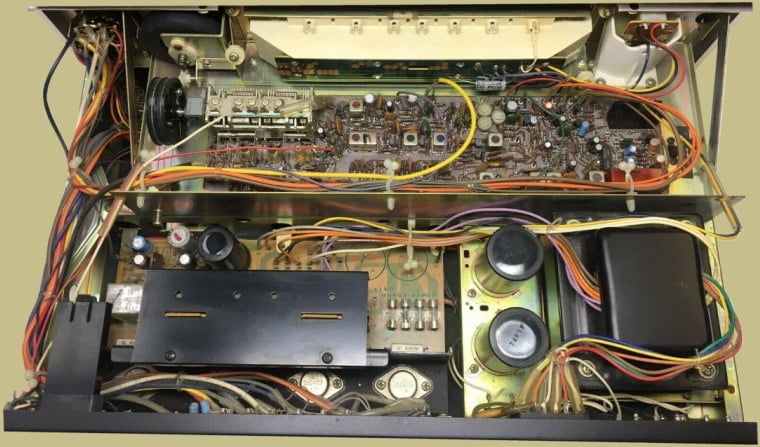
Specifications:
- Tuning range: FM, MW
- Power output: 32 watts per channel into 8Ω (stereo)
- Frequency response: 15Hz to 30kHz
- Total harmonic distortion: 0.5%
- Damping factor: 60
- Input sensitivity: 2.5mV (mic), 2.5mV (MM), 100mV (DIN), 100mV (line)
- Signal to noise ratio: 70dB (MM), 80dB (line)
- Channel separation: 45dB (MM), 45dB (line)
- Output: 100mV (line), 30mV (DIN)
- Speaker load impedance: 4Ω to 16Ω
- Semiconductors: 3 x FET, 3 x IC, 49 x transistors, 25 x diodes, 4 x zener diodes
- Dimensions: 18 7/8″ W x 5 3/8″ H x 11 13/16″ D (480 x 135 x 300mm)
- Weight: 26.4 lbs. (12kg)
- Year: 1973
The 771 has a nice array of inputs including a phono, two tape decks, and even two AUX inputs.

Overall, the Sansui 771 is a simple but powerful receiver with a warm and detailed sound. It can have issues with hum so that’s something to look out for. However, a well functioning 771 is a great receiver and should be able to do whatever you ask of it. Sansui made quite a few 771’s and 881’s so they are not hard to find and prices are reasonable relative to similar performing stereos. If you see one at a reasonable price – get it.
